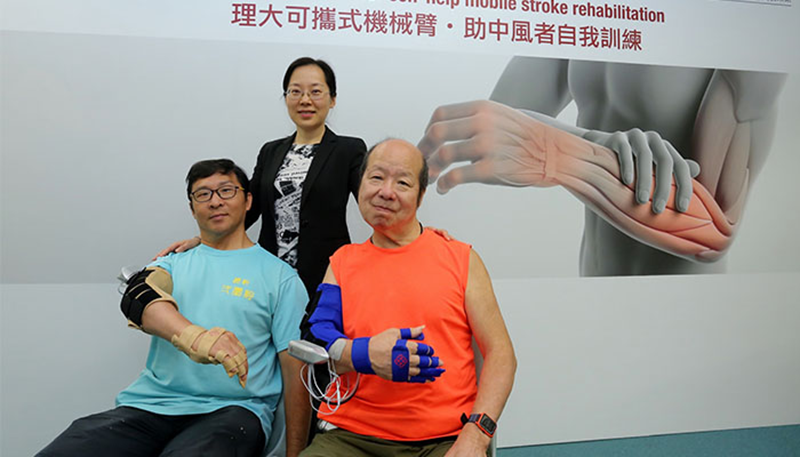Stroke is the third leading cause of disability worldwide. Someone in the United States has a stroke every 40 seconds. Stroke is a leading cause of serious long-term disability. In Hong Kong, there are about 25,000 new incidences of stroke annually in recent years.
Read more Kessler Foundation and Virtualwear Team Up to Improve Recovery Outcomes in Stroke Patients
Studies have found that intensive, repeated and long-term rehabilitation training are crucial for boosting the physical mobility of stroke patients, thus help alleviating post-stroke symptoms such as disability. However, due to the overwhelming demand for rehabilitation services, patients have to queue up for a long time to get a slot for rehabilitation training. As such, they can’t get timely support and routine rehabilitation exercises. Stroke patients also find it challenging to travel from home to outpatient clinics.
A new robotic arm developed by the Hong Kong Polytechnic University (PolyU) may ease that problem. The new robotic arm can facilitate self-help and upper-limb mobile rehabilitation for stroke patients. Developed by Dr Hu Xiao-ling and her research team in the Department of Biomedical Engineering (BME) of PolyU, the lightweight device enables stroke patients to engage in intensive and effective self-help rehabilitation exercise anywhere, anytime after they are discharged from hospital. The robotic arm, called “mobile exo-neuro-musculo-skeleton”, is the first-of-its-kind integration of exo-skeleton, soft robot and exo-nerve stimulation technologies, reports PolyU.

The robotic arm features lightweight design (up to 300g for wearable upper limb components, which are fit for different functional training needs), low power demand (12V rechargeable battery supply for 4-hour continuous use), and sportswear features.
Thus the newly developed arm provides a flexible, self-help, easy-to-use, mobile tool for patients to supplement their rehabilitation sessions at the clinic. The innovative training option can effectively enhance the rehabilitation progress.
“We are confident that with our mobile exo-neuro-musculo-skeleton, stroke patients can conduct rehabilitation training anytime and anywhere, turning the training into part of their daily activities. We hope such flexible self-help training can well supplement traditional outpatient rehabilitation services, helping stroke patients achieve a much better rehabilitation progress,” said Dr Hu Xiaoling. Her team anticipated that the robotic arm can be commercialized in two years.
According to PolyU, an initial trial of the robotic arm on 10 stroke patients indicated better muscle coordination, wrist and finger functions, and lower muscle spasticity of all after they have completed 20 two-hour training sessions. Further clinical trials will be carried out in collaboration with hospitals and clinics.
The robotic arm consists of components for wrist/hand, elbow, and fingers which can be worn separately or together for different functional training needs. The sportswear design, using washable fabric with ultraviolet protection and good ventilation, also makes the robotic arm a comfortable wear for the patients, said the PolyU article.












